5 Ways Eating Chickpeas Can Help You Lose Weight, Say Dietitians
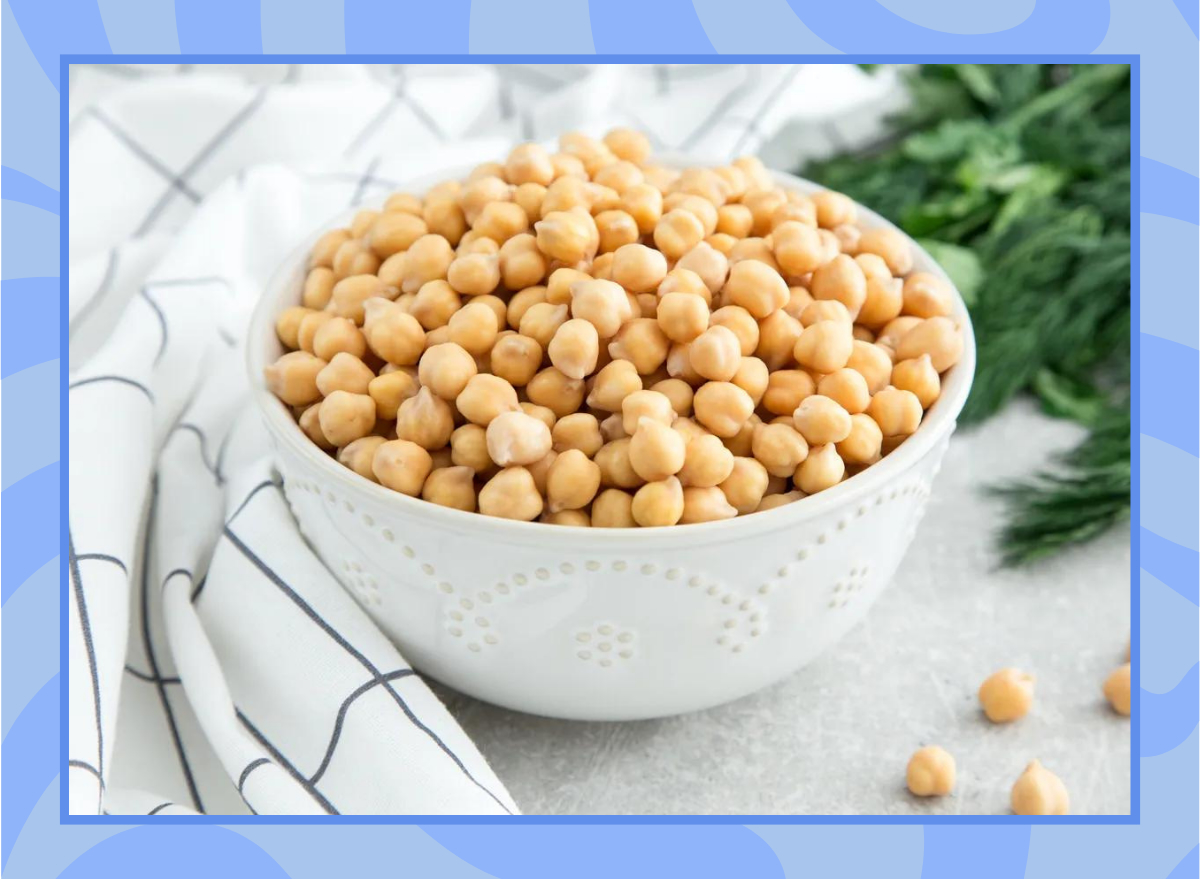
As if you needed a reason to eat more healthy foods like chickpeas, what if we told you that they play a key role in driving weight loss?
Sydney Lappe, MS, RDN, registered dietitian at bistroMD, says chickpeas pack many important vitamins and minerals, including B vitamins, iron, phosphorus, and magnesium. Versatile and easy to munch on, you can include this legume in an appetizer or as a focal part of your meal.
Below, Lappe and Sydney Greene, MS, RD, and member of our Eat This, Not That Medical Expert Board share all of the ways that chickpeas can help keep you full while also helping you lose weight in a healthy and sustainable way. After, be sure to read up on our list of The 7 Healthiest Foods to Eat Right Now.
They're high in fiber.
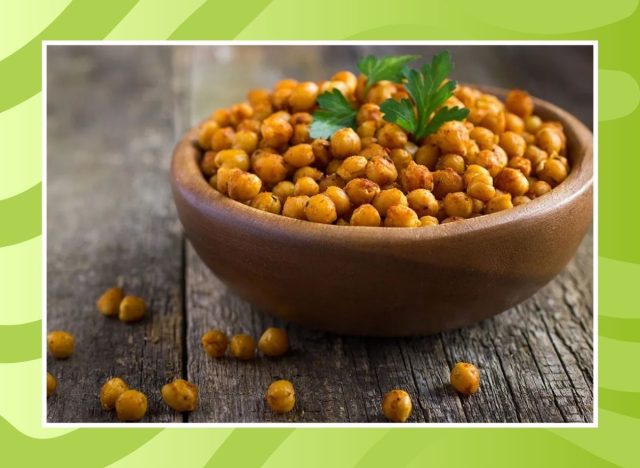
As Greene notes, "one serving of chickpeas contains roughly 10 grams of blood sugar-regulating and hunger suppressing fiber, which is a critical nutrient in weight management."
More specifically, chickpeas contain soluble fiber, which contributes to healthy gut bacteria and may also help with weight maintenance, according to Lappe.
"While the connection is not entirely clear, some evidence shows people with a diverse gut microbiome have a lower risk of developing cravings and belly fat," she says.
Here are 5 Major Side Effects Of Not Getting Enough Fiber, Says Science.
They may elicit a "thermic effect."
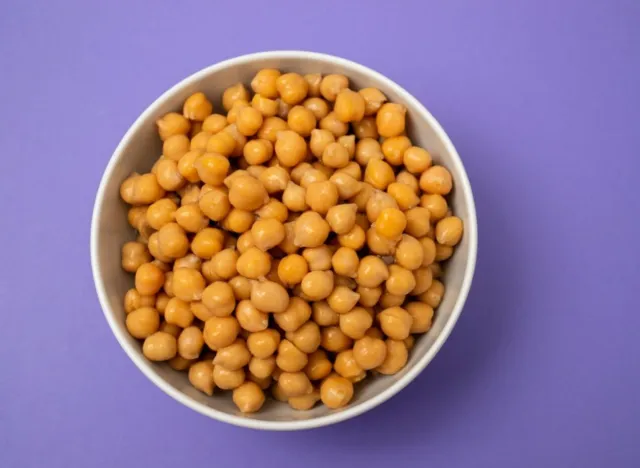
Chickpeas offer a great source of protein, and eating a sufficient amount of this macronutrient is key to achieving weight loss, Lappe says.
"Protein helps regulate hunger and related hormones, leading to greater satiety and curbing cravings while also supporting lean muscle and an efficient metabolism," she adds.
Lappe also emphasizes that protein has a higher "thermic effect" compared to carbs and fat, meaning the body burns more calories digesting protein than it does with these other two macronutrients.
Plant-based protein may drive more weight loss.
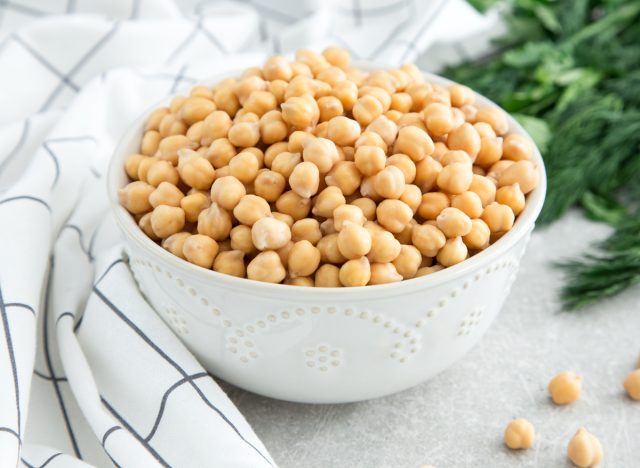
It's possible that eating plant-based protein found in foods like chickpeas, quinoa, and soybeans for lunch may help prevent midday snack cravings and keep you full until dinner.
"Some studies show beans and legumes rich in plant-based protein promote greater satiety compared to animal proteins like pork and veal," Lappe says.
They're packed in amylose.
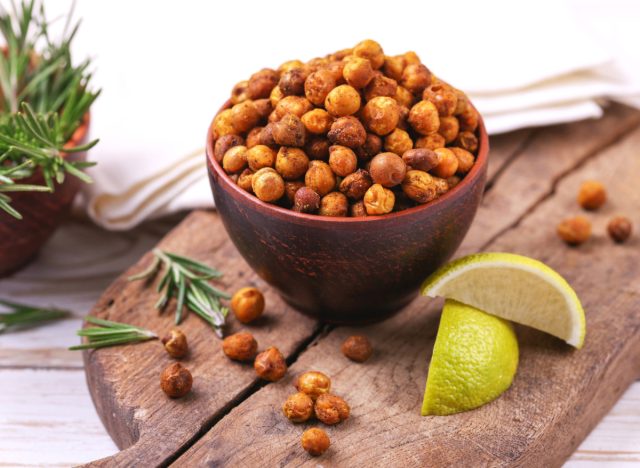
After eating crackers or carrots with hummus, you may notice that you feel quite satisfied in spite of the fact that it's a low-calorie snack. Aside from the satiating effects that come from both the protein and the fiber content, chickpeas also contain amylose, a resistant starch that the body digests slowly. This can especially help people with diabetes lose weight because the starch works to prevent sudden spikes in blood sugar levels, Lappe says.
They add bulk to meals.
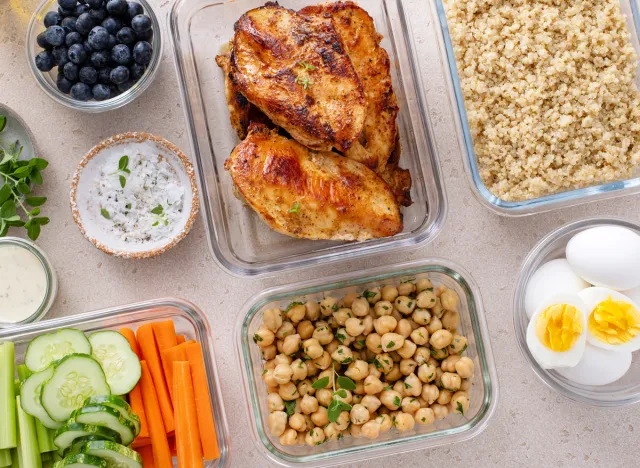
If you're just eating a bowl of leafy greens for lunch, chances are you're going to be hungry within two hours of eating. Since chickpeas offer protein and fiber, they add bulk to your meal without costing you a bunch of calories.
"High-fiber foods are shown to improve lipid levels and offer a feeling of being full while simultaneously delaying the digestion process," Lappe says.
Bottom line, this legume is not only friendly for your budget, but it can also be included in an array of dishes—from stews to rice dishes.
"Including chickpeas in a balanced diet can help manage weight, control blood sugars, improve blood lipids, among the many benefits," Lappe adds.
For more, be sure to check out What Happens To Your Body When You Eat Chickpeas.








